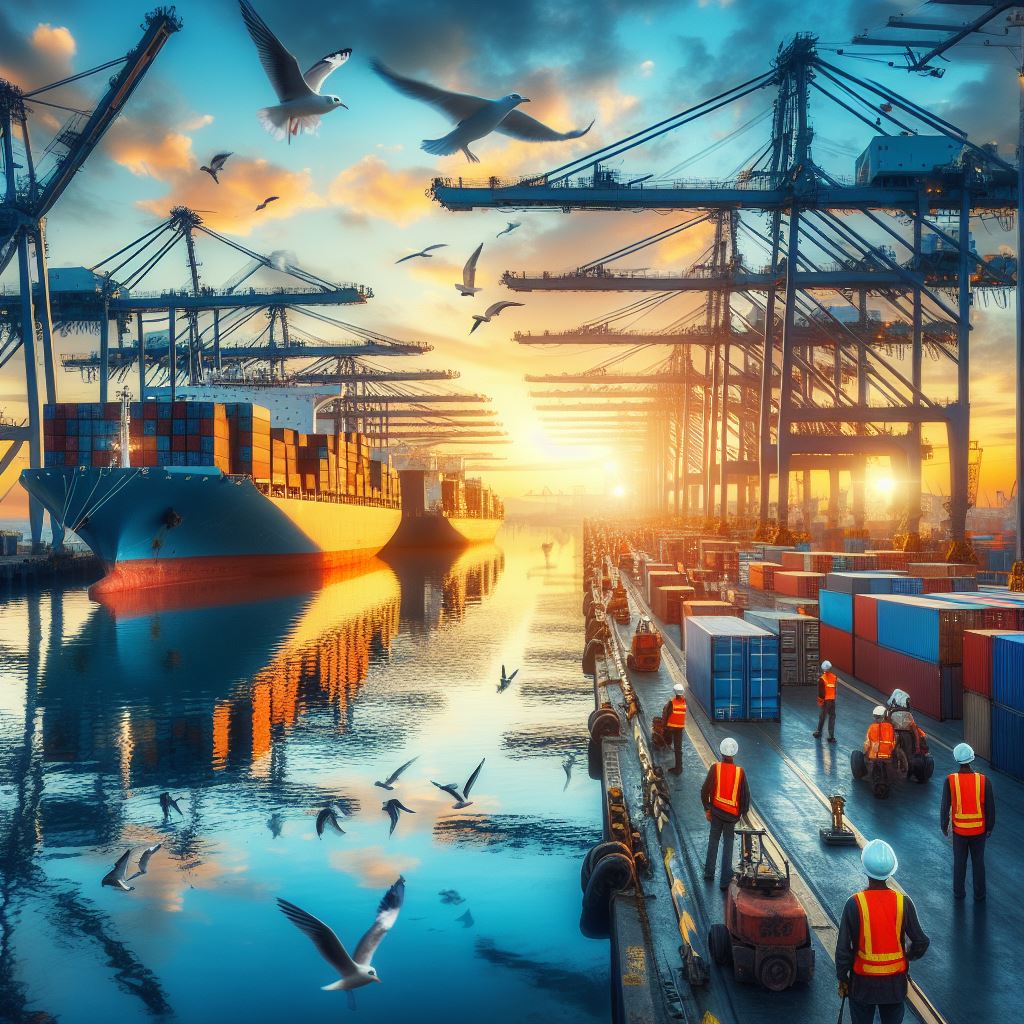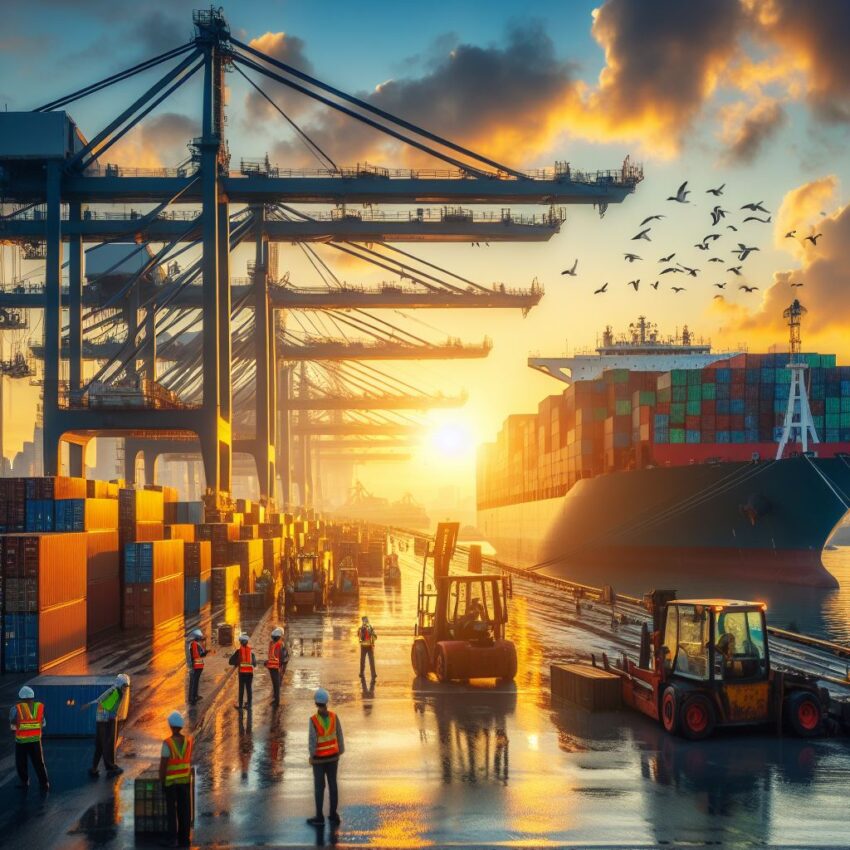Container shipping, a backbone of global commerce, confronts some of the toughest environments on Earth. From towering waves in the open ocean to cramped conditions at busy ports, operators must navigate a complex array of obstacles. Understanding these extreme shipping avenues and the complications at various critical ports can provide insights into the resilience required in marine logistics.
Conquering Extreme Maritime Challenges

Seafarers have long contended with the wrath of nature, but certain waterways present uniquely formidable challenges that test even the most seasoned crews.
The North Atlantic is notorious for its volatile weather, especially during winter months. Massive swells and fierce storms can emerge suddenly, greatly complicating the task of container transport. Shipping companies must meticulously plan their routes and schedules to avoid the worst of the weather, often relying on sophisticated meteorological data to steer clear of potentially perilous situations.
Located between South America’s Cape Horn and Antarctica’s South Shetland Islands, the Drake Passage is infamous for its rough seas. The convergence of the Atlantic, Pacific, and Southern Oceans creates unpredictable waves and an unforgiving climate, making it one of the most challenging waterways for any vessel. Advanced navigation technology and experienced navigators are crucial for safely traversing this tumultuous passage.
As one of the busiest shipping lanes in the world, the Straits of Malacca serve as the main shipping channel between the Indian Ocean and the Pacific Ocean. The narrow strait, flanked by Indonesia and Malaysia, is not only heavily trafficked but also fraught with piracy risks and shallow waters. Efficiently managing maritime traffic and maintaining constant vigilance are essential for safe passage.
Complex Port Navigations: When Precision Meets Expertise
Transitioning from the high seas to the port approach, the complexity of maritime operations becomes concentrated. Ports with challenging navigation can disrupt schedules and pose risks to container ships and their cargoes. Here are some ports where skillful maneuvering is just the beginning.
1. Port of Shanghai
Handling the immense flow of goods through the Port of Shanghai requires precise coordination. The Yangtze River Delta, with its bustling naval traffic and frequent fog, demands high levels of alertness and precise timing from all entering and exiting vessels. Pilots specializing in local waters are crucial for guiding massive container ships through congested channels.
2. Port of Hamburg
Germany’s largest port, the Port of Hamburg, is located on the Elbe River and experiences significant tidal variations. Navigating the tidal constraints requires a deep understanding of tidal patterns and highly accurate timing, ensuring vessels can enter and leave the port without impacting their structural integrity.
3. Port of Long Beach
Despite being one of the major ports in the United States, the Port of Long Beach faces geographical limitations that present a unique set of challenges. The port’s approach is restricted by its proximity to urban areas and its relatively shallow waters, requiring dredging operations and careful planning to accommodate the ever-increasing size of container ships.
Strategies for Managing Extreme Shipping Risks
Successful navigation through extreme shipping conditions and challenging ports demands more than just skilled seafarers and advanced technology. Several strategies are vital for minimizing risks and ensuring the safety of both crew and cargo.
Implementing Cutting-Edge Technology
Implementing technology is paramount for shipping companies looking to enhance operational safety and efficiency. From positioning systems to state-of-the-art radar technology, these investments offer numerous benefits. Advanced technologies aid in predicting severe weather patterns, allowing ships to navigate safely around storms. They optimize routes, minimizing fuel consumption and reducing environmental impact. Real-time navigational assistance is crucial, especially in crowded or narrow waterways, where precision is paramount to avoid collisions or groundings. These innovations improve overall safety standards, reducing the risk of accidents and enhancing crew confidence. Embracing such advancements underscores a commitment to progress and ensures that shipping companies remain competitive in a rapidly evolving industry.
Enhanced Training and Preparedness
Comprehensive training programs are non-negotiable, ensuring sailors possess the skills necessary to navigate challenging scenarios. Simulation-based modules replicate high-risk situations, allowing crews to practice responses to everything from rogue waves to navigating tight turnarounds in crowded ports. By immersing sailors in realistic simulations, they can develop the instincts and reflexes needed to react swiftly and decisively in demanding circumstances. Such training fosters confidence among crew members, enabling them to perform effectively even when faced with unexpected challenges. Investing in thorough training not only enhances safety but also boosts operational efficiency, as well-prepared crews can minimize disruptions and optimize performance. Ultimately, prioritizing training and preparedness demonstrates a commitment to crew welfare and ensures that shipping operations run smoothly, even in the most demanding conditions.
Collaboration and Communication
Collaboration and communication are vital aspects of maritime operations, particularly when navigating busy routes. Working closely with local port authorities and nearby vessels is essential for deconflicting traffic and ensuring smooth navigation. Sharing information about weather changes, tidal bores, or other maritime hazards fosters a safer operating environment. By maintaining open channels of communication, ships can receive timely updates and warnings, allowing them to adjust their routes or take necessary precautions. This collaborative approach helps prevent accidents and minimizes disruptions to maritime traffic. Furthermore, effective communication ensures that all stakeholders are informed and able to coordinate their actions seamlessly. Emphasizing collaboration and communication promotes efficiency and cooperation within the maritime community.


